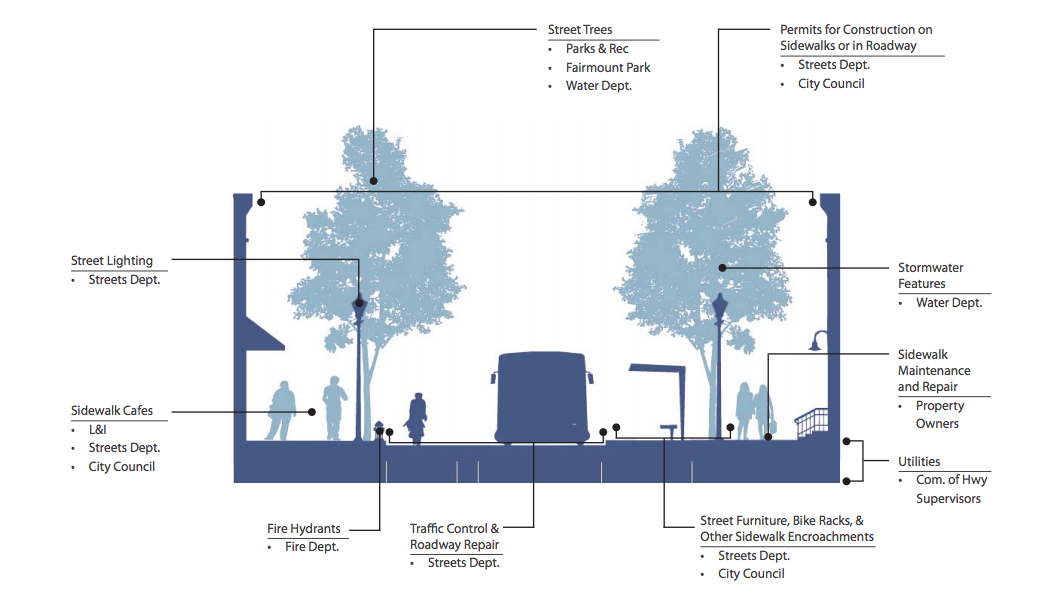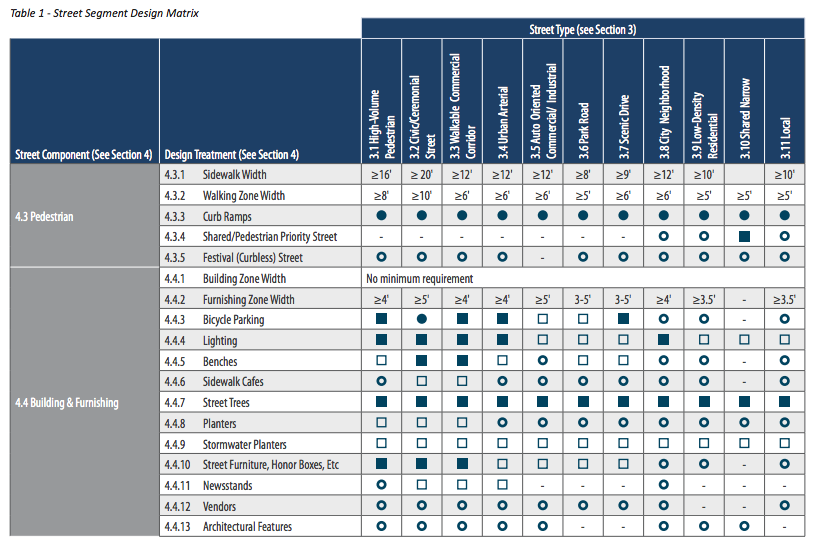Final Complete Streets Design Handbook aims to inform and guide development

Since Mayor Nutter issued his “Complete Streets” executive order in 2009, the city has been working to transform its nearly 2,600 miles of streets into “complete streets” – those that accommodate all users whether they travel by foot, car, bus or bike. Recently the Complete Streets Design Handbook, a significant part of the complete streets effort, came on line but has received relatively little attention.
This past November the Complete Streets Bill created a buzz across the city as it passed through City Council. The bill clarified the city’s bicycle laws and required that projects meeting a certain design threshold go through a complete streets review process guided by the Complete Streets Handbook. Unlike the bill though, little has been said about the final version of the handbook, which was released early this month.
Perhaps one of the final policy components of the complete streets initiative, the Complete Streets Handbook gathers in one place all of the work Philadelphia has been doing to improve its streets and informs those changing the streets how to best do so.
Complete Streets Design Handbook
The handbook is intended to ensure that all changes to the public right-of-way create complete streets. It aims to communicate design guidelines to planners, engineers and architects and to help communities understand the city’s “tool box” for creating better streets, the Mayor’s Office of Transportation and Utilities (MOTU) wrote in a recent blog post.
The handbook outlines which city agencies and departments are responsible for various permits and project approvals. In condensed matrices, it identifies which street furniture and design treatments are required or recommended for each of Philadelphia’s 11 street types outlined in the Pedestrian and Bicycle Plan. These treatments include everything from benches and stormwater planters to bicycle components and on-street parking.
The final section of the handbook includes a complete streets checklist that asks project leaders basic design questions that, if they were following the handbook’s guidelines, should have been addressed.
The goal is to simplify the process of designing complete streets and to ensure that new projects comply.
“We are taking steps to make it easier to do better projects,” said Andrew Stober, MOTU’s chief of staff.
MOTU and the Philadelphia Streets Department crafted the Complete Streets Handbook with the input from state and local government agencies, community groups, business associations, developers and other stakeholders. The handbook builds off of the Pedestrian and Bicycle Plan, 2035 Comprehensive Plan, the new zoning code’s standards, Greenworks Philadelphia and the Philadelphia Water Department’s Green City, Clean Waters program.
“It really clarifies and puts all in one place the policies we already have,” Stober said.
Complete Streets legislation
Per the Complete Streets Bill, all projects that meet a certain design threshold must go through a Complete Streets review process by the Streets and Planning Departments. These projects must complete the handbook’s “Complete Streets Project Review Checklist” to demonstrate compliance.
Projects that qualify for Plan of Development review or qualify for Civic Design Review must submit a completed checklist. All projects that both change the curb line and either add a lay-by-lane, require a traffic study, affect a signalized intersection or add or expand a driveway to 24 feet must also submit a completed checklist.
MOTU paid close attention to who was required to complete the checklist and how the process will work. The handbook is structured to guide planners, engineers and architects through the process and answer common questions as they arise, not to add extra work.
“Something we thought a lot about was to streamline, not add administrative burden,” Stober said.
Complete Streets for community groups
Though many projects will not meet the complete streets checklist threshold, community groups and small-scale projects can still use the handbook as a guide and reference for understanding city agencies’ roles and ideal street designs.
“It’s as much about educating as it as guidelines,” said MOTU’s senior planner/analyst Ariel Ben-Amos at a public meeting during the draft and revision process. “We’re really trying to educate the public.”
The handbook doesn’t tell how to design a tree planter but instead tells how a tree planter should fit into the overall street design, he said.
At the early public meetings, Ben-Amos said he is willing to talk with interested community groups about the handbook and how they can use it.

WHYY is your source for fact-based, in-depth journalism and information. As a nonprofit organization, we rely on financial support from readers like you. Please give today.



